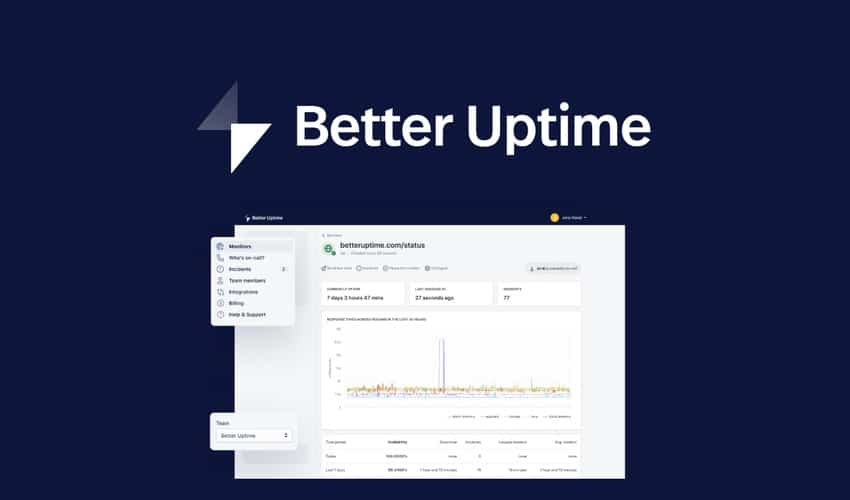When it comes to websites, uptime monitoring tools are some of the most important ones you will use, and it’s always hard to choose the right one.
With so many features and options, #UptimeMonitoring solutions are now more available than ever.
But, how do you choose? Well, think of this article as a guide to the best uptime monitoring tools that are around today.
What is Uptime Monitoring
In order to understand what uptime monitoring actually is, first we have to explain what “website uptime” is. Website uptime is the amount of time your website is available to users over a given period. It is represented as a ratio of the time your site was available divided by the total time and it’s always best to have the website available as much as possible.
Even though 100% uptime is the ultimate goal, some downtime is bound to happen, so 99.99% (52 minutes and 36 seconds of downtime) or 99.98% (1 hour, 10 minutes, and 7 seconds of downtime) are great yearly uptime ratios.
Uptime monitoring tools are very important for businesses to ensure website uptime, functionality, and performance. Another good thing about these tools is that they only calculate the actual availability and don’t take into account other factors such as performance and functionality.
1. Better Uptime
We saved the top spot for the best uptime monitoring tool – Better Uptime. This monitoring tool is the ultimate combination and has all the features the other tools come with and even more.
Each time there is an issue, not only do you get notified, but you also get a screenshot and an error log when your site goes down, so there is no more guessing on what the problem is.
You can integrate services that you already use such as Slack, Datadog, Heroku, and many others to create a network of monitoring services. And with the on-call duty scheduling, you can alert only the right people on your team and configure the on-call duty rotations on the calendar app.
Better Uptime has a three-day trial period, but the hobby option is completely free, and it’s the right choice for anyone who is just starting their business.
2. Statuspage
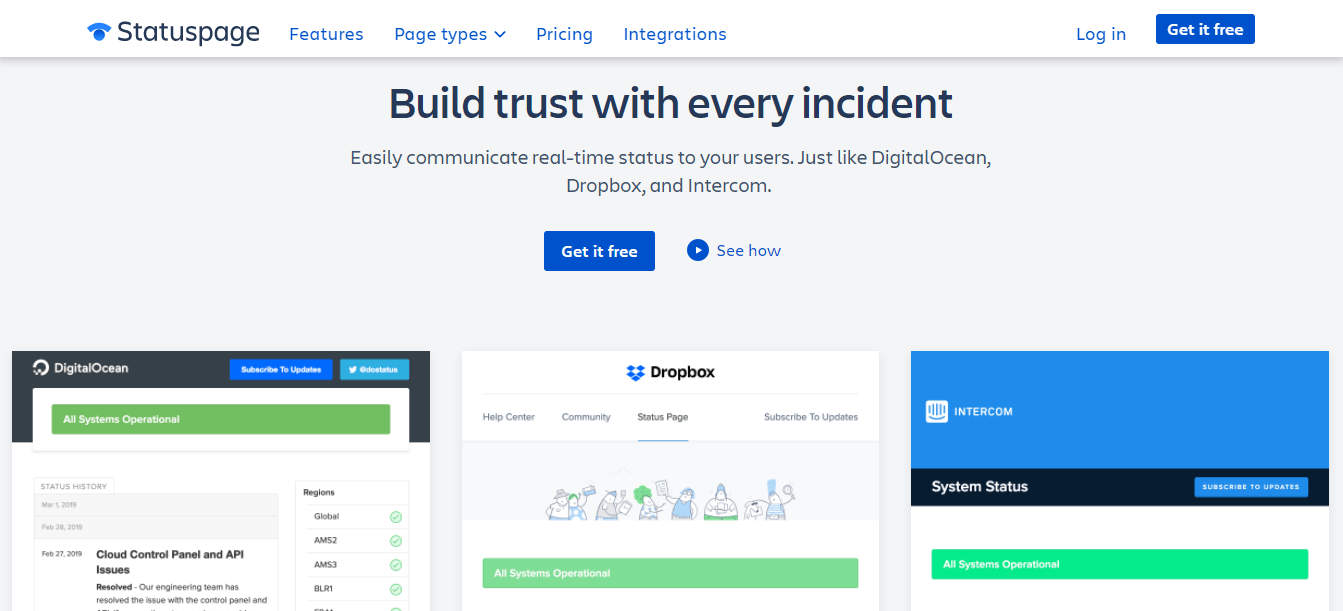
The next monitoring tool on this list is the simple yet effective Statuspage. This monitoring tool is one of the user-friendly ones because of its simplicity and organization. The incidents are displayed on the top of your page so you can see them right away and there is also the option to receive notifications via email or SMS.
Their systems are created out of many different functional pieces, and that is why listing each of them separately helps the user see accurately what the issue is. Also, you can inform users about scheduled maintenance well in advance, so they know it’s happening. The scheduled maintenance can be displayed on your page or also via SMS or email.
They offer three types of pages: public, private, or audience-specific pages. The audience-specific one is the most interesting because it offers the possibility to get in the role of the customer and resolve the specific issues they are experiencing without needing multiple status pages.
3. PagerDuty
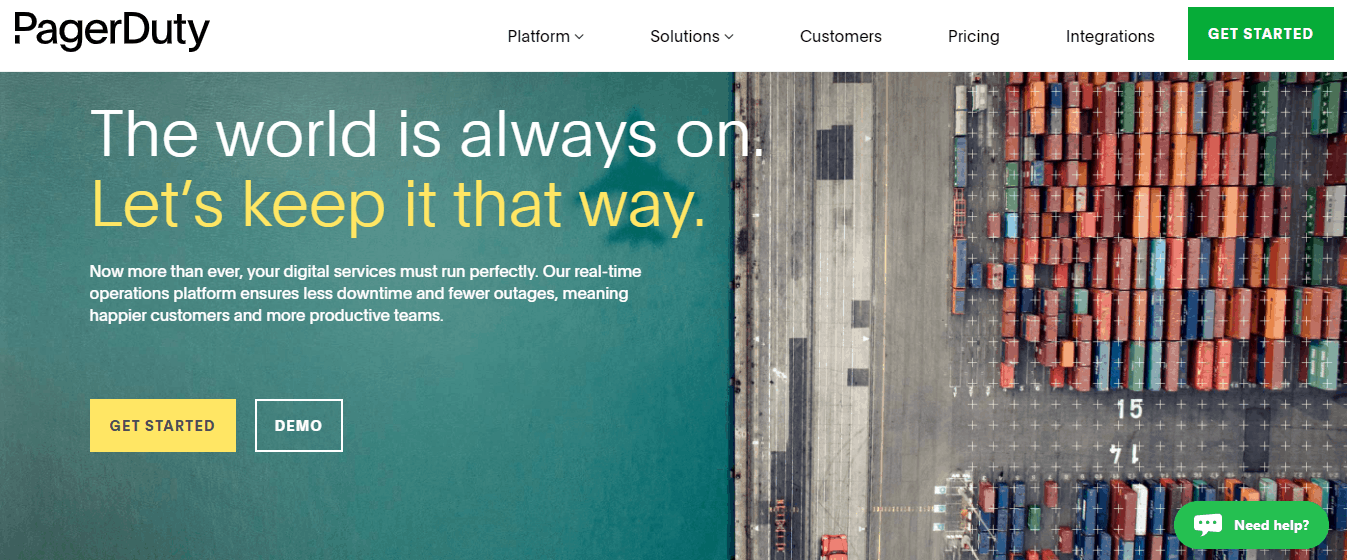
PagerDuty presents itself as the central nervous system of your digital ecosystem. But, what does that mean? Well, for starters, it does much more than just monitor your uptime. It proactively manages your operations so you can detect major incidents in real-time, it collects digital data, and based on the gathered data, it “learns” from past incidents and optimizes your digital operations.
Furthermore, it automates work across teams of experts that can rapidly solve even the most critical problems and the business owners can get the answers they need in real-time.
One thing that they have that other similar tools don’t is the webinar series that will show you in half an hour how to get better visibility into what’s happening during an incident, how to reduce manual processes with the automated incident response, and how to stop future incidents from happening with their analysis and tools. If you didn’t get the information you wanted, there is always a Q&A after the webinar.
A free 14-day trial is also included, and some of the biggest companies that use PagerDuty as their “central nervous system” are Dropbox, Zoom, BBC, Netflix, and many others.
4. Pingdom
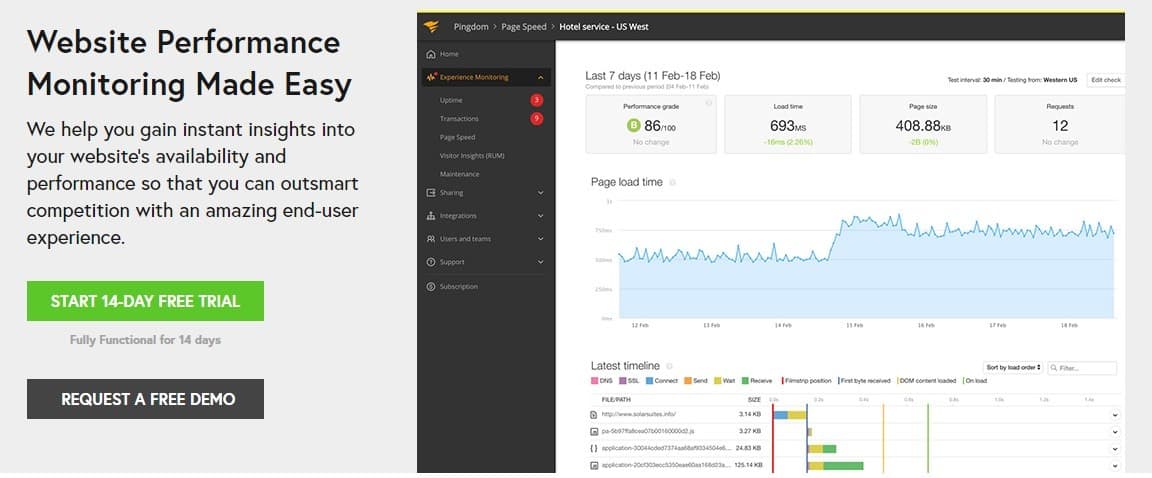
Pingdom is not a free monitoring tool, but it does combine synthetic and real user monitoring.
Synthetic monitoring includes uptime monitoring, page speed analysis (it shows if the website is slow to help you work out the problems and provide the best service to your website users), transaction monitoring (for testing simple or complex transactions such as new users, logins, search, shopping checkout, URL hijacking and more).
On the other hand, real user monitoring shows you exactly how users are interacting with your website, helps you understand how your users experience your site based on the browser, device, and geographic location, compares user metrics over time to see the monthly performance of your site and set your own KPIs and SLAs.
Companies such as Evernote and Imgur recommend Pingdom and there is a free trial period if you want to test it out and see how the combined monitoring suits your website.
5. UptimeRobot
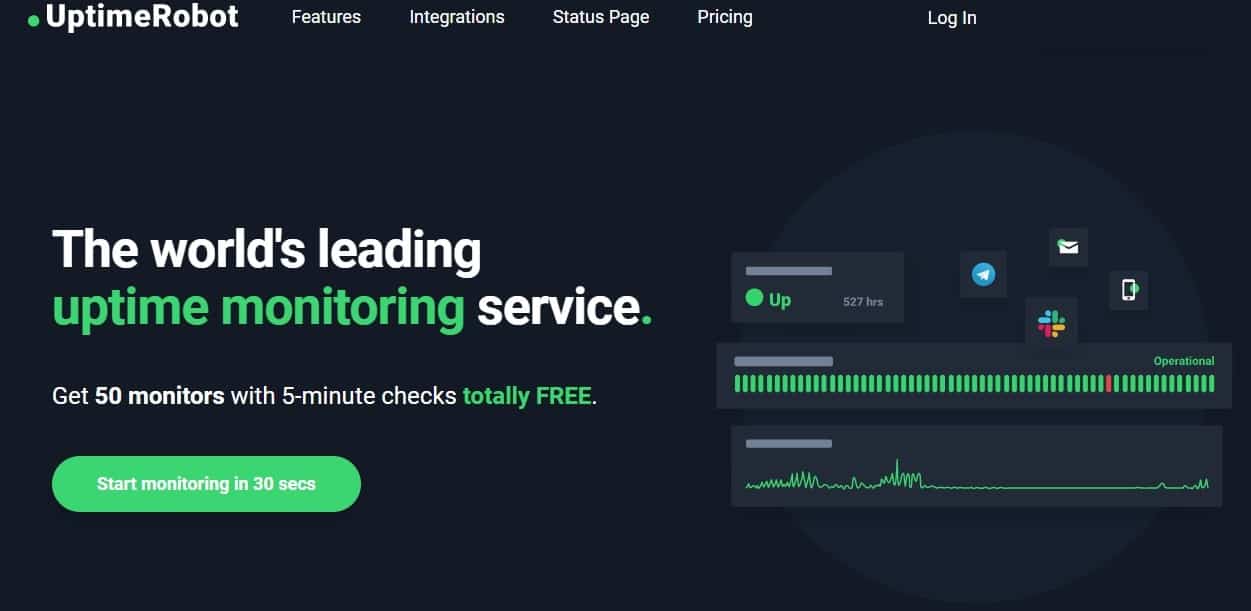
UptimeRobot is one of the most famous monitoring tools, with over 800,000 users. The free version allows you to monitor up to 50 sites every five minutes and it alerts you if the sites are down.
The basic features include website monitoring, SSL certificate monitoring (sends a notification 30 days before your SSL certificate expires), port and ping monitoring (for monitoring specific ports), and cron job monitoring (by sending a request, you can check if the server-side jobs or intranet devices are connected).
For the advanced users, there are features for seeing your response times, keyword monitoring, sharing incident updates, custom HTTP requests, and so on.
Its status page allows you to notify your users about maintenance and incidents, have a password-protected status page, custom status page domains, etc. All in all, a good monitoring tool with all the features you need for free.
Wrapping things up
In conclusion, out of all the options, Better Uptime is definitely the most affordable and the best uptime monitoring service that you can get.
All its features combined with the user-friendly interface, make it the easiest way to keep track of what’s going on with your website. Also, the on-call agents and the multiple ways of receiving notifications about issues, make it also the most efficient monitoring tool.
